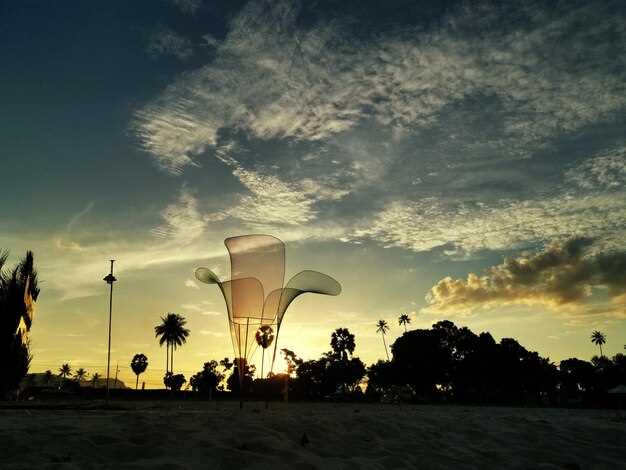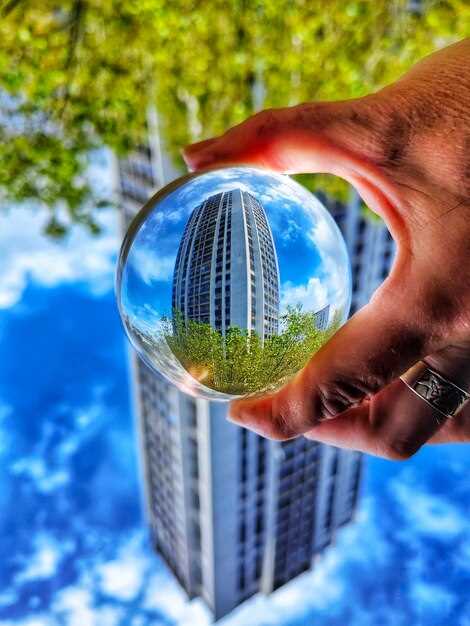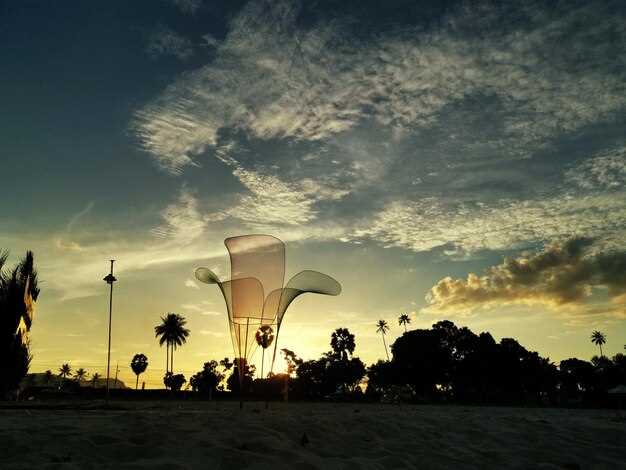Plant more trees and vegetation. Urban areas, dominated by concrete and asphalt, tend to absorb and retain much more heat than green spaces. By increasing the urban canopy with trees, parks, and gardens, cities can significantly decrease temperatures. Not only do trees provide shade, but their process of transpiration helps cool the air. Studies indicate that properly placed trees can reduce temperatures by up to 9°F, making urban living considerably more comfortable.
Enhance roof surfaces with cool or green roofs. Standard roofing materials heavily contribute to urban heat by absorbing heat from the sun. Opting for cool roofs, which reflect more sunlight, can help address this. Even more impactful, green roofs covered with vegetation offer both temperature regulation and biodiversity benefits. Installing such roofs can potentially reduce air-conditioning costs by as much as 15% during hot months.
Adopt permeable pavement where possible. Traditional paving materials trap heat and contribute to runoff, exacerbating the heat island effect. Permeable pavements allow water to filter through, cooling the area as it evaporates. They also prevent flooding and reduce the need for air-conditioning. In cities that have incorporated permeable solutions, temperature reductions in paved areas can reach up to 5°F.
Maximize urban green space planning. Designing cityscapes with a focus on integrating natural elements is essential. Incorporating parks, street trees, and gardens in urban planning not only mitigates heat but enriches the lives of city inhabitants. Community-driven green projects foster a sense of ownership and pride, further encouraging sustainable urban development.
Elevate community engagement in sustainability efforts. Fostering a culture that values sustainability begins at the grassroots level. Educating city dwellers on the benefits of greenery, cool materials, and sustainable practices helps in gathering support for long-term solutions. This broad-based involvement ensures that cities can effectively respond to the challenges posed by rising urban temperatures.
Green Infrastructure Solutions

Integrate green roofs on urban buildings to absorb heat, improve insulation, and reduce energy use. A well-designed green roof can lower rooftop temperatures by 40-60%, cutting down urban heat. Enhance street-level greenery by installing tree canopies and urban forests, effectively shading pedestrian areas and lowering the surrounding air temperature.
- Promote Urban Gardens: Encourage the creation of urban gardens and community green spaces. These not only reduce heat but also enhance biodiversity and create social gathering spots.
- Implement Permeable Pavements: Replace traditional concrete and asphalt with permeable pavements that allow water infiltration, reducing surface temperatures and managing stormwater. Materials such as porous concrete or interlocking pavers are excellent choices.
- Utilize Vertical Gardens: Install vertical gardens on building facades to cool the building surface, improve air quality, and offer aesthetic benefits. Studies show a temperature reduction of up to 12°C on treated walls.
- Expand Parks and Green Corridors: Develop or enhance urban parks and green pathways that connect different city areas. These corridors promote airflow and offer cooler microclimates along their paths.
Incorporating diverse plant species that thrive in local conditions can maximize these benefits, ensuring both resilience and sustainable urban cooling. Prioritize native and drought-resistant plants to minimize maintenance and water usage. Collaborating with local governments and communities ensures the success and adoption of green infrastructure projects across cities.
Implementing Green Roofs
Start by selecting suitable plant species that thrive in local climate conditions and require minimal maintenance. Use a diverse mix of hardy, drought-resistant plants to ensure year-round greenery and resilience against extreme weather. Native species are preferable as they enhance the habitat for local wildlife and improve biodiversity.
Construct a layered system on the roof, starting with a waterproof barrier to protect the building. Add a root-resistant layer to prevent vegetation from penetrating the roof. Include a drainage system to manage excess rainwater, along with filter fabric to prevent soil erosion.
A typical green roof system consists of the following components:
| Layer | Function |
|---|---|
| Waterproofing Membrane | Prevents water from damaging the building structure. |
| Root Barrier | Protects the membrane from plant roots. |
| Drainage Layer | Ensures proper water runoff and prevents waterlogging. |
| Filter Fabric | Keeps the growing medium in place while allowing water through. |
| Growing Medium | Supports plant growth and retains necessary moisture. |
| Vegetation | Provides shading and cooling effects. |
Ensure sufficient structural support for the added weight of the green roof. Consult with an architect or structural engineer to assess the load-bearing capacity of the existing building. Consider modular systems for easier installation and maintenance, especially on retrofitting projects.
Regularly maintain the roof garden to maximize its benefits. Include checks for drainage and waterproofing efficiency, and periodically remove any invasive species. Implement an irrigation system to support plant health during dry periods. By integrating these elements, green roofs can significantly mitigate the urban heat island effect while offering additional insulation benefits to the building.
Enhancing Urban Tree Canopy
Plant native and drought-resistant trees strategically in heat-prone urban areas. Choosing species adapted to the local climate ensures survivability and reduces maintenance costs. Trees such as Quercus macrocarpa (Bur Oak) or Ginkgo biloba thrive in various environments, providing ample shade.
Prioritize high-density planting along streets and parks to maximize shade and reduce surface temperatures. Studies show that a 10% increase in tree canopy can cool down a city by up to 2°F, significantly impacting areas with high temperatures.
Involve community groups in tree planting and maintenance programs. Engaging residents cultivates a sense of ownership and ensures long-term care, which is vital for the trees’ growth and health.
Implement policies offering tax incentives for property owners who plant and maintain trees. This approach encourages private sector participation in expanding green canopy, fostering a collective environmental responsibility.
Leverage technology with aerial mapping and Geographic Information Systems (GIS) to identify areas lacking tree coverage. Target these zones for planting to ensure equitable distribution of greenery across urban settings.
Encourage vertical greening systems like green walls in densely built environments where space is a premium. These innovations not only augment green cover but also enhance building insulation, contributing to reduced energy consumption.
Revise city planning regulations to mandate minimum tree planting in new developments. Establish these guidelines early in the process to ensure developers include sufficient greenery in their designs, promoting a sustainable urban ecosystem.
Partner with local nurseries to ensure a steady supply of diverse, healthy saplings, matching the city’s ecological goals. Collaboration with nurseries ensures that the urban forestry program is sustainable and adaptable to changing needs.
Your proactive steps transform cities into cooler, more livable spaces while addressing broader environmental challenges. A refined urban tree canopy benefits all city inhabitants, creating healthier and more pleasant urban environments.
Creating Cool Pavements
Install light-colored materials for pavements to reflect more sunlight and absorb less heat. This technique reduces surface temperatures significantly, by approximately 10-20°C, compared to traditional dark pavements. Consider using concrete or reflective coatings, which not only improve cooling effects but also enhance durability.
Incorporate permeable pavements to allow water penetration and evaporation, aiding in natural cooling. This method decreases heat absorption and helps manage stormwater, reducing runoff and the associated heat retention in urban areas.
Consider adding vegetation around pavements, such as planting trees and shrubs. Shade from trees can lower pavement surface temperatures by 11-25°C, providing additional cooling benefits. Opt for native plants to ensure sustainability and lower maintenance costs. Implement these strategies in new developments and retrofit existing urban settings to mitigate the urban heat island effect effectively while improving the overall aesthetic and comfort of urban environments.
Establishing Urban Parks and Green Spaces
Create more urban parks by transforming vacant lots or underutilized areas into green spaces. This approach not only adds much-needed greenery but also helps lower temperatures through shade and evapotranspiration. Cities like New York have successfully implemented these projects, resulting in cooler microclimates.
Promote rooftop gardens as a solution for densely built environments. Encourage property owners and developers to cover rooftops with soil and plants. Rooftop gardens can significantly reduce surface temperatures, sometimes by as much as 40 degrees Fahrenheit, while providing insulation to buildings.
Integrate trees into urban planning to maximize their benefits. Carefully select and plant native tree species along streets, in parks, and around parking lots. Trees not only offer shade but also contribute to air quality improvement and reduction in energy consumption by cooling surrounding areas.
Encourage community engagement by involving local residents in the design and maintenance of green spaces. This not only fosters a sense of ownership but also ensures the spaces remain vibrant and well-tended. Community gardens, for example, allow residents to participate directly while contributing to biodiversity and local food production.
These strategies, when effectively implemented, can substantially mitigate the urban heat island effect, improve air quality, and enhance city livability.
Utilizing Vertical Gardens in City Planning
Incorporate vertical gardens in urban planning to tackle heat island effects effectively. Begin with identifying key locations such as building facades and public spaces that can accommodate vertical greenery. These installations significantly increase green surface area, providing shade and lowering ambient temperatures.
- Identify Suitable Buildings: Focus on structures that receive extensive sunlight since vertical gardens help absorb solar radiation, reducing internal cooling costs by up to 20%.
- Choose Appropriate Plant Species: Select drought-resistant and native plant species that require minimal maintenance, enhancing sustainability and reducing water consumption by 50% compared to traditional gardens.
- Integrate Irrigation Systems: Implement efficient drip irrigation systems to ensure optimal water usage. Monitor plant health continuously through sensors to maintain them in excellent condition with minimal manual intervention.
- Encourage Community Involvement: Partner with local communities to maintain these green installations. Community gardens foster a sense of ownership and ensure the continuous upkeep of vertical gardens, maximizing their environmental benefits.
Vertical gardens also improve air quality by filtering pollutants, contributing to healthier urban environments. Integrate these green innovations in new city projects and retrofit existing structures. Leverage government incentives and private partnerships to fund and support these initiatives, ensuring widespread adoption.
- Prioritize Early Planning: Include vertical gardens in the initial planning stages of urban development to align with other sustainable architectural features.
- Incentivize Adoption: Set up grants or tax reductions for developers and property owners who implement vertical gardens, encouraging wider application.
By strategically incorporating vertical gardens, cities can substantially mitigate the urban heat island effect while promoting greener, cooler, and more sustainable urban spaces.
Technological and Design Innovations

Embrace cool roofs with high solar reflectance and thermal emittance properties to significantly reduce building temperatures, leading to lower energy consumption during hot periods. Research indicates these roofs can reduce surface temperatures by up to 50°F compared to traditional roofs.
Green roofs offer another powerful solution by promoting evaporative cooling. A well-designed green roof can reduce a building’s energy use by up to 30%, according to various studies. They also contribute to improved air quality and biodiversity within urban settings.
Incorporate permeable pavements to decrease surface heat retention. These innovative materials allow water infiltration, cooling the surrounding environment. In tests, permeable surfaces have shown temperature reductions of up to 5°F during peak summer conditions.
Deploy smart urban planning by increasing urban green spaces, such as parks and green belts, mitigating the heat island effect through evapotranspiration and a reduction in heat-retaining surfaces. For instance, urban areas with 20% tree canopy coverage can experience ambient temperature reductions of up to 10°F.
Use advanced building materials like phase change materials (PCMs) that absorb, store, and release thermal energy efficiently. This technology helps stabilize indoor temperatures, reducing HVAC demand by as much as 30% in some applications.
Finally, invest in dynamic shading solutions, such as automated louvers and smart glass, which adjust opacity based on sunlight intensity. These innovations minimize solar heat gain, maintaining comfortable indoor environments while reducing cooling loads by up to 20%.
Incorporating Reflective and Cool Roof Materials
Choose roofing materials with high solar reflectance and thermal emittance to significantly reduce heat absorption. This simple choice can decrease roof surface temperatures by up to 50°F, which translates into less heat entering your building. Opt for materials like white thermoplastic polyolefin (TPO) membranes or polyurethane-coated metal. These advanced materials not only reflect sunlight but also quickly release absorbed heat.
- Select light-colored roofing: Go for whites, lighter grays, or pastels. These colors reflect more sunlight compared to traditional dark roofs.
- Install cool roofing membranes: TPO and PVC membranes offer enhanced reflectivity and superior weather resistance.
- Consider elastomeric coatings: These coatings can be applied over existing roofs to improve reflectivity and longevity, often extending roof life by over a decade.
Implementing these solutions can lead to a reduction in cooling energy use by 15-30%, providing significant savings on utility bills. Encourage building owners and contractors to prioritize these materials, ensuring new constructions and roof replacements are designed with the urban heat island effect in mind.
Using Smart Building Design to Maximize Shade
Prioritize orientation by positioning buildings to block sunlight during peak hours, using natural landscape features like hills or other structures for additional protection. Integrate overhangs and recessed windows, ensuring they provide shade without obstructing natural light completely. These elements can significantly reduce indoor heat while preserving comfort and reducing energy consumption. Choose reflective or light-colored roofing and facade materials to minimize heat absorption and promote cooler environments inside and around the building.
Utilizing a green roof can enhance shade while offering insulation benefits. It’s not just about aesthetics; a well-planned green roof helps mitigate heat absorption and provides a natural cooling mechanism. Another effective approach is strategic placement of trees and vegetation, incorporating native species that require minimal water. Trees with expansive canopies offer significant shade, helping to cool surrounding areas.
Incorporate adjustable shading devices such as louvers, shutters, or awnings which can adapt to seasonal changes, providing optimal shade when needed. These solutions allow residents to control the amount of sunlight entering the building, promoting comfort. Such features are not only functional but also add architectural interest.
Lastly, focus on community planning by encouraging clustered development with interconnected shaded pathways. This ensures that pedestrians can move comfortably, reducing reliance on vehicles and decreasing overall heat production in urban areas. Smart design creates a sustainable, cooler city environment, enhancing the quality of life for its residents.
Integrating Water Features for Cooling
Consider installing reflective water bodies like ponds or shallow pools. They can reduce surface temperatures by up to 2°C through evaporation and reflection of solar radiation. Moreover, they enhance local humidity without significant water loss if combined with native drought-resistant plants, which require minimal irrigation.
Urban fountains are another excellent option. They not only serve decorative purposes but also actively lower surrounding air temperatures. Strategic placement of fountains in areas with high foot traffic can provide immediate relief to pedestrians and help improve overall air quality.
For those concerned about maintenance, rain gardens offer a sustainable solution. These gardens are designed to absorb and filter rainwater, helping to mitigate stormwater runoff while simultaneously providing cooling effects through evaporation. They also support biodiversity, attracting beneficial insects and wildlife, creating a small oasis in urban settings.
A more technical approach involves integrating cooling water features into urban infrastructure. This can include water channels along walkways or misting systems integrated into public spaces. These systems can be automated to operate during peak heat hours, providing cooling precisely when and where it is needed most.
| Water Feature | Cooling Method | Additional Benefits |
|---|---|---|
| Reflective Pools | Evaporation & Reflection | Low water usage with native planting |
| Urban Fountains | Evaporative Cooling | Improves air quality & aesthetic appeal |
| Rain Gardens | Evaporation | Stormwater management & biodiversity |
| Cooling Channels or Misting Systems | Targeted Evaporative Cooling | Automated for efficiency |
Video:
“Urban Heat Island Effect Solutions.”
“Urban Heat Island Effect Solutions.”
Q&A:
How do green roofs help mitigate the urban heat island effect?
Green roofs reduce the urban heat island effect by providing insulation and absorbing less heat than traditional roofing materials. They act as natural air conditioners by cooling the surrounding air through evapotranspiration, where plants release water vapor, thereby lowering temperatures. In addition to temperature regulation, green roofs also improve air quality and increase biodiversity in urban areas.
What is the role of urban planning in reducing the heat island effect?
Urban planning plays a significant role in combating the urban heat island effect by designing cities with more green spaces and ensuring the use of reflective and porous materials in construction. Effective urban planning encourages the incorporation of parks, trees, and green corridors that help lower temperature and provide shade. Careful planning also considers wind flow and building orientation to maximize natural ventilation and cooling.
Can planting more trees in cities significantly impact the urban temperature?
Yes, planting more trees in urban areas can significantly impact temperatures. Trees provide shade, which reduces ground and air temperatures. They also carry out transpiration, where water from their leaves evaporates, cooling the surrounding air. This natural process can markedly decrease temperatures in urban environments, contributing to the reduction of the urban heat island effect.
What are some high-reflectivity materials that can be used to combat urban heat?
High-reflectivity materials, often referred to as “cool materials”, include light-colored concretes, reflective coatings for roofs and pavements, and special tiles designed to reflect more sunlight and absorb less heat. These materials are particularly effective in reducing surface and ambient temperatures in urban areas, resulting in cooler cities and lower energy consumption for cooling buildings.
